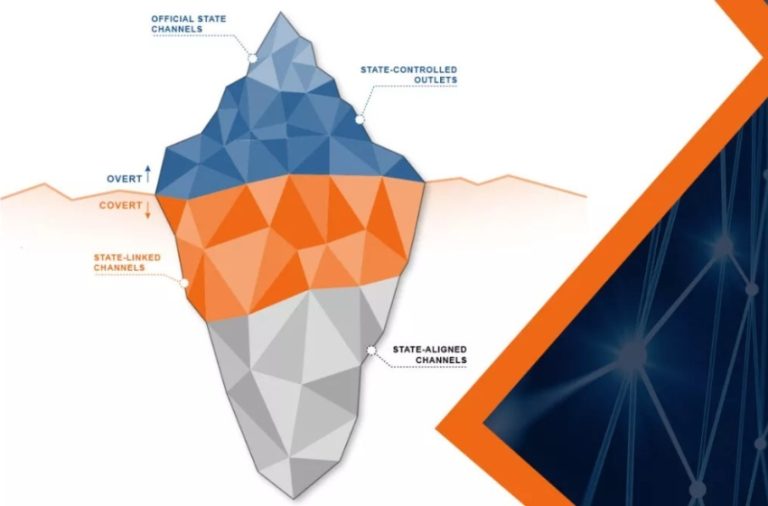The Kremlin’s Disinformation Iceberg: A Deep Dive into Russia’s Manipulation Machine
The Russian disinformation ecosystem is not a haphazard collection of online rumors; it’s a meticulously engineered system, best visualized as an iceberg. The blatant propaganda broadcast on state-run media is merely the visible tip, concealing a vast and intricate infrastructure beneath the surface. This submerged network comprises a multitude of actors, ranging from seemingly independent websites and blogs to social media personalities, pseudo-experts, and anonymous commentators. These elements work in concert, reinforcing, debating, mocking, and amplifying carefully crafted narratives designed to sow confusion and advance the Kremlin’s agenda in the global information space. Understanding this complex web is crucial to countering its pervasive influence.
Russia’s international information manipulation campaigns rely on a sophisticated and well-funded system. This apparatus incorporates both overt and covert elements, leveraging state-controlled media and clandestine networks. It’s designed for adaptability, enabling the Kremlin to tailor its approach to specific regions, whether geographically close to Russia or thousands of kilometers away. This "digital hydra," as it has been described, possesses the remarkable ability to constantly evolve and regenerate, adapting to changing circumstances and evading countermeasures. The European External Action Service (EEAS) has provided valuable insights into this evolving architecture, employing technical and behavioral analysis to expose the mechanisms and actors behind the disinformation façade.
Unraveling this complex web requires looking beyond superficial appearances and examining the hidden connections between seemingly disparate actors. While some pro-Kremlin outlets, such as RT, openly acknowledge their ties to the Russian government, even boasting about their strategic importance, they simultaneously engage in covert activities, obscuring the origins and funding sources of their projects. In cases where financial or editorial links are deliberately concealed, researchers employ a combination of technical and behavioral indicators to expose the hidden hand of the Kremlin. Technical indicators include analyzing digital fingerprints such as website hosting, domain registration, and underlying infrastructure. Behavioral indicators focus on patterns in content publication, including recurring themes, the use of artificial intelligence, and automated reposting. These analytical tools help categorize disinformation sources based on their proximity to the Kremlin and illuminate their specific role within the larger system.
The EEAS report categorizes the Kremlin’s disinformation architecture into four distinct layers. The uppermost layer consists of official state channels, including government ministries, agencies, and Kremlin representatives. These are the overt mouthpieces of the regime, setting the tone and direction for the entire disinformation ecosystem. They are often the first to disseminate fabricated narratives, which are then amplified and disseminated by the other layers. Disturbingly, these official channels sometimes cite anonymous sources and conspiracy theories, lending an air of legitimacy to disinformation narratives at the highest levels of government. International forums are exploited as platforms to further legitimize these false narratives on the global stage.
The second layer comprises state-controlled media outlets, including major federal television channels, RT, and Sputnik. Their connection to the Russian government is undeniable, and their editorial policies are rigidly aligned with the state’s agenda. Many of these outlets have faced sanctions from the European Union for their complicity in promoting and supporting Russia’s war against Ukraine. Their role is to disseminate the narratives established by the first layer to a wider audience, both domestically and internationally, using the veneer of journalistic legitimacy.
The third layer operates in a more deceptive “gray zone,” consisting of channels affiliated with the state but actively concealing those connections. These outlets masquerade as independent sources, adding a layer of plausible deniability to their disinformation efforts. NewsFront, registered in annexed Crimea and operating in multiple European languages, exemplifies this tactic. Created by individuals linked to Russian intelligence services, NewsFront has a long history of disseminating pro-Kremlin narratives. Its activities have been exposed by both online platforms and government investigations, revealing the deceptive nature of its operations. Similarly, the "Doppelgänger" operation involved the creation of a network of fake websites designed to manipulate Ukrainian and European audiences, further demonstrating the Kremlin’s sophisticated tactics.
The fourth and most deeply concealed layer comprises channels that appear to be pro-Kremlin but lack formal, demonstrable links to the Russian government. This layer includes anonymous social media accounts, blogs, and imitation websites involved in operations like "False Façade" and "Portal Kombat." While direct attribution to the Kremlin remains challenging, their activities consistently align with Russian state interests, suggesting a coordinated effort. These seemingly independent actors play a crucial role in amplifying and disseminating disinformation narratives, adding an apparent grassroots element to the Kremlin’s carefully orchestrated campaigns. They contribute to the overall confusion and erosion of trust in legitimate information sources.
Mapping these disinformation actors based on their proximity to the Kremlin is not merely an academic exercise; it’s essential to understanding how Russia’s complex manipulation machine functions. By dissecting the structure and operation of this architecture, we can develop more effective countermeasures and protect ourselves from its insidious influence. Understanding the different layers, their interconnectedness, and their respective roles in the disinformation ecosystem is vital for developing targeted strategies to expose and counter the Kremlin’s manipulative tactics. This deep dive into the disinformation iceberg is not just about identifying the problem; it’s about equipping ourselves with the knowledge and tools to navigate the treacherous waters of the modern information landscape.


